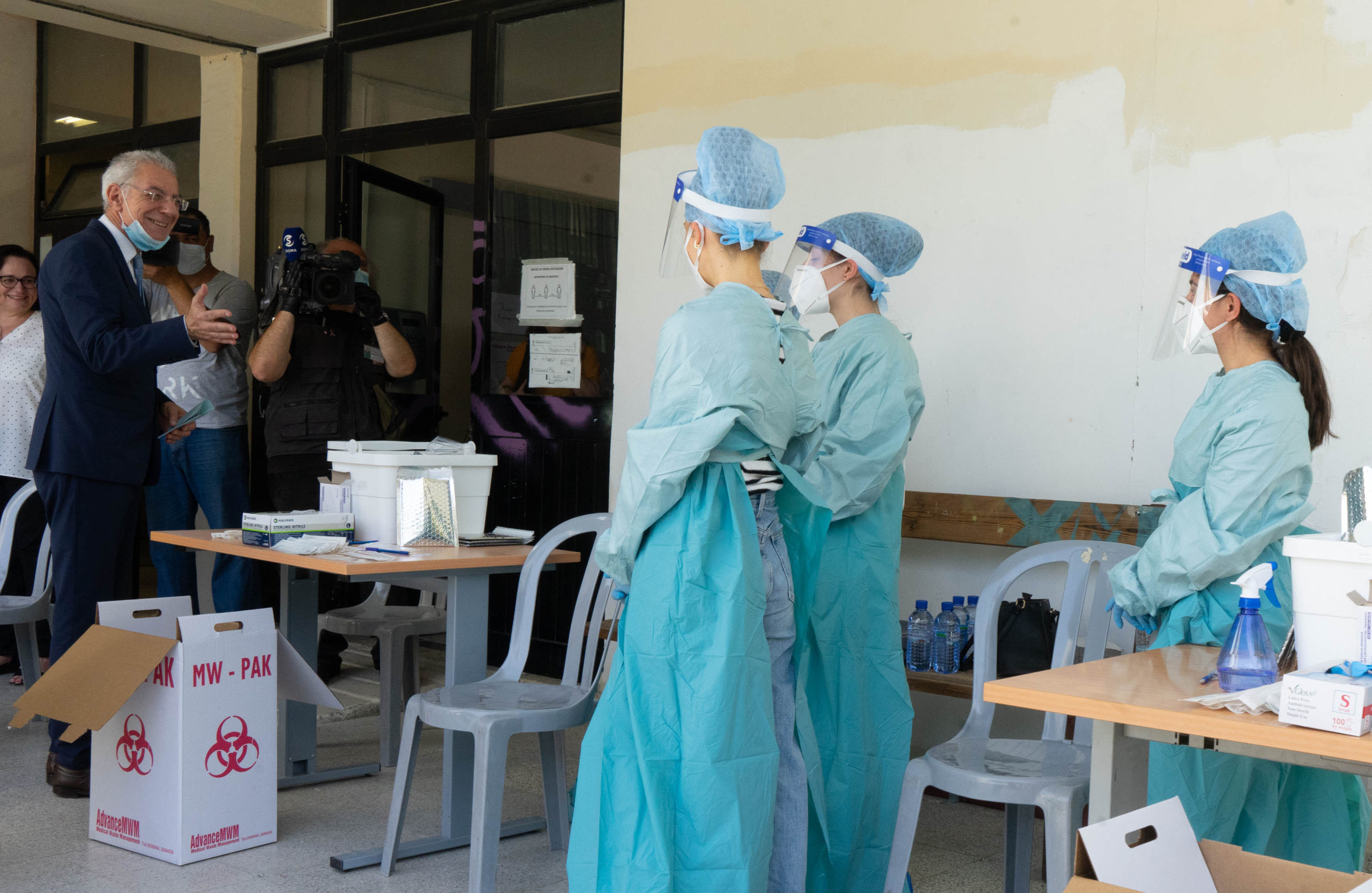The World Health Organisation’s belief that the end of the COVID-19 pandemic is now in sight has Cypriot virologist Dr Peter Karayiannis attributing the estimate to increased vaccination coverage.
“Coronavirus can no longer circulate easily among the population, thus being deprived of the opportunity to develop new variants,” said Dr Karayiannis in comments to CyBC radio.
He added that things would become harder for the virus once the updated bivalent COVID-19 vaccines, covering Omicron subvariants BA4 and BA5, are offered to the population.
The health expert also noted there is no room for complacency, as the vaccination coverage needs to be maintained at high levels, urging people belonging to vulnerable groups to get a second booster shot.
Health authorities will soon roll out a second booster shot for the general population.
The updated vaccines will be available as a second booster (fourth dose) for those aged 30 and above, those working in care homes and healthcare workers, and pregnant women regardless of age.
Recipients must have taken their previous COVID shot at least five months prior.
The head of the WHO said Wednesday that coronavirus deaths worldwide last week were the lowest reported in the pandemic since March 2020, marking what could be a turning point in the years-long global outbreak.
WHO Director-General Tedros Adhanom Ghebreyesus said the world has never been in a better position to stop COVID-19.
“We are not there yet, but the end is in sight.
“Now is the worst time to stop running,” he said.
“Now is the time to run harder and make sure we cross the line and reap all the rewards of our hard work.”
In its weekly report on the pandemic, the UN health agency said deaths fell by 22% in the past week, at just over 11,000 reported worldwide.
There were 3.1 million new cases, a drop of 28%, continuing a weeks-long decline in the disease in every part of the world.
Still, the WHO warned that relaxed COVID testing and surveillance in many countries means that many cases go unnoticed.
The agency warned that new variants could yet undo the progress made to date.
The WHO reported that the omicron subvariant BA.5 continues to dominate globally and comprised nearly 90% of virus samples shared with the world’s biggest public database.
It expects future waves of the disease but was hopeful those would not cause many deaths.










